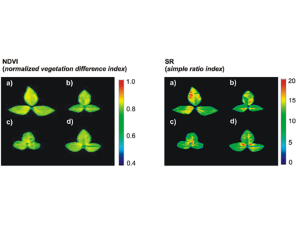Currently, 20% of the world’s arable land is affected by salinity in the soil, representing grave environmental stress that negatively affects the productivity of crops. Considering the forecast that by 2050 the rising soil salinization will influence over 50% of all of the global arable landmass, whilst global population is growing faster than ever before, we can conclude this is a pressing issue.
Typically, plants can be divided into two categories regarding their ability to flourish in salinized soil, namely glycophytes and halophytes. Without going into too much detail, most crops are considered glycophytes, which do not tolerate salinity. Halophytes, however, are able to cope with increased salinity around the root structure. As such, enforcing the understanding we have on the ecology, biology and the evolutionary patterns of the two, should result in the development of more salt resistant crops.

Generally speaking, healthy crops will absorbs most of the visible light that reaches it, while reflecting a big part of the near infrared light. On the contrary, unhealthy crops reflect most visible light and less of the near infrared light. These effects can be perfectly observed by applying hyperspectral imaging, as shown in the image on the side.
All the leaves shown above are of soybean plants. Plant A and B are plants that are not exposed to salinized soil, whereas the plants C and D are. Additionally, plant A and C are the same phenotype and B and D are the same genotype. Plant C clearly shows damages related to salt stress conditions, whereas plant D does not. Therefore, we can conclude that the genotype of plant D is more resistant to salinity and would thus be an interesting crop for future development.
Experiments like these show the potential of hyperspectral imaging as a relatively cheap, non-invasive method for plant research. The method will contribute to the assessment of the effects of salinity to crops at an early stage, thereby identifying and selecting tolerant species or cultivars for further breading processes.
For further information on hyperspectral imaging and how we apply the method to our systems, please contact WPS.
Sytar, O., et al., Applying hyperspectral imaging to explore natural plant diversity towards improving salt stress tolerance, Sci Total Environ (2016),

